10 Days in the Galapagos with the Aquatica A7RII
Aug 08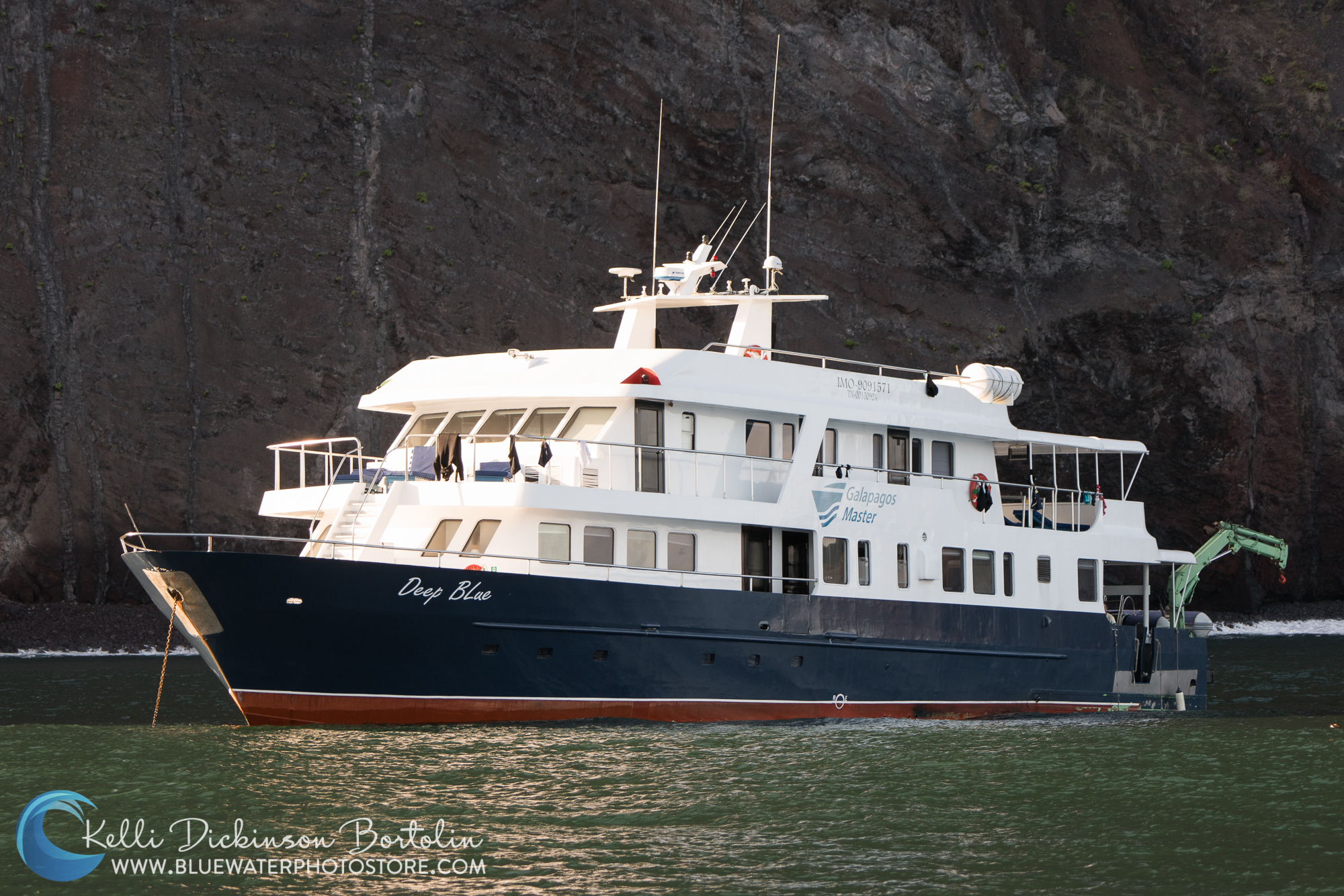
Diving in the Galapagos isn’t for the faint of heart. From the heart pounding surge and currents at Wolf and Darwin, to the chilly waters around the main islands, like Isabela, the Galapagos can really test a diver’s skill. Knowing that I was headed for the adventure of a lifetime, and what could be my most challenging diving to date, I wanted to make sure I had the right tools for the job.
Aquatica housings, engineered and designed in Canada, are well known for standing up to harsh ocean conditions. This trip was the perfect chance to test out the new Aquatica A7R II underwater housing.
Right from the start, the Galapagos provided wondrous marine and terrestrial life. As we waited for the panga to take us to the boat, the group watched pelicans diving for small fish off nearby rocks while sea lions and marine iguanas soaked in the sunlight. Aboard the Galapagos Master Deep Blue, we were briefed on the many regulations of this national park, as well as given a glimpse of the excitement to come. After a quick checkout dive and dinner, it was time to start prepping gear, and the Aquatica housing proved easy to assemble after having been fully dismantled for traveling.
In order to pack as much as possible in a small carryon, I had removed the sturdy molded handles, which came off easily by removing one large bolt. Reassembly was a cinch, and setting up the ports took no time at all. The housing uses a standard bayonet mount, so a little muscle was needed to lock the ports in place, however, they include a textured section on all extension rings making it easier to grip the otherwise smooth aluminum finish. If you need a bit more leverage, make sure to throw a strap wrench in your bag.
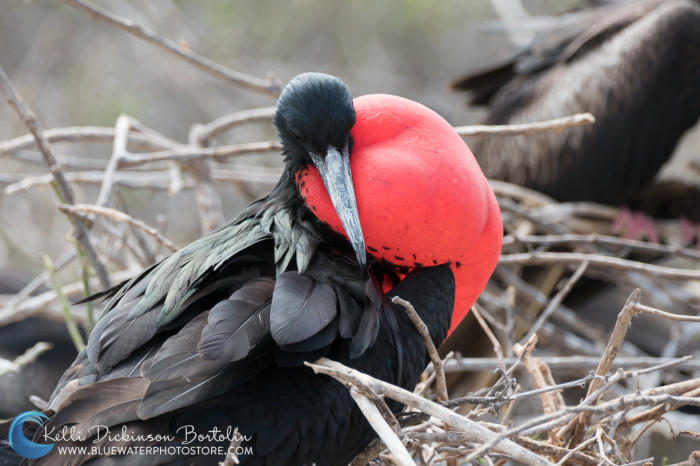
Male Frigate bird in mating display.
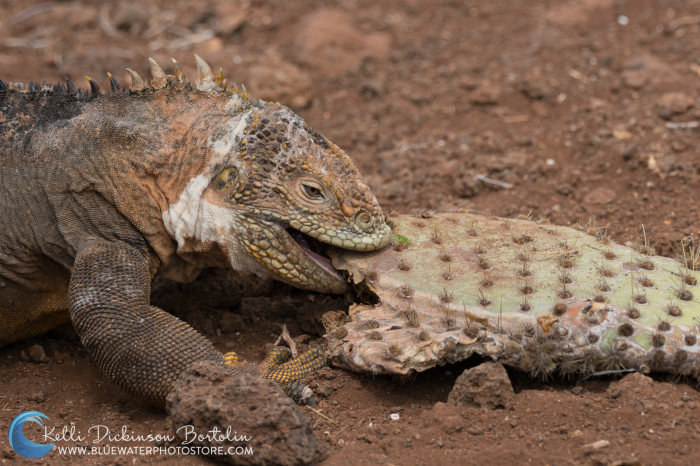
Land Iguana chomps down on a cactus for lunch.
The first full day on the trip we explored a small island called North Seymour, watching Boobies, Frigate Birds and Marine Iguanas wander around the desert landscape. Afterwards we dove off the a small sand bar called Mosquera in chilly waters with light current. From there it was a long overnight motor to the prime destinations of the trip: Darwin’s Arch and Wolf Island. These sights promised hammerheads and other large sightings, including the hope of a whale shark or two now that it was the end of June. Prior to the trip I had been warned about the conditions. Often beset by strong currents with the possibility of rough surface conditions, diving here was not expected to be easy. As it turned out, rough was an understatement, and if not prepared, the dives at Darwin could easily have been disastrous.
We hopped into the pangas as quickly as possible for what felt like a long, slow ride over to the arch. Choppy seas tossed the little boat around, with waves breaking over the bow a few times until we pulled up as close to the arch as we could get. A negative entry was key, back rolling off the panga and continuing straight down to grab onto the rocks below. Once again I wa glad to have the Aquatica housing. These housings are designed and tested with rough, cold water in mind and have been known to endure challenging ocean conditions. This sturdy construction paired with the Surveyor Vacuum Sensor System assured me that my housing had and would maintain a proper o-ring seal, even when rolling off the panga with me versus being gently handed down after I hit the water. I had no issues with the seal on the trip, and the housing continued to perform well with each dive. The security of using a vacuum check system, especially when plunging off a panga to catch dolphins swimming by, or constantly opening and closing the housing to change the ever dying Sony battery is priceless.
Another great benefit to having the Aquatica housing on this trip was the ability to customize and use the control dial on the back of the camera. Aquatica is the only manufacturer who included the dial control on their housing. There are many options you can choose to assign to this button, but I chose ISO control. What this meant is that I now had immediate control of my ISO through the rear control dial, just like changing aperture or shutter speed from the other two dials. Any other method of changing ISO involves clicking a button, scrolling over to the desired ISO and then hitting OK. While not too involved it does add time. When you’re swimming as fast as you can after a whale shark, being able to adjust all key settings on the fly, including ISO, can make or break getting the shot. This feature is also extremely useful when shooting video.
Upcoming Galapagos Trips with Scott Gietler
- Join our April 2017 Galapagos Trip
- Join our Jan or May 2018 Galapagos Trip
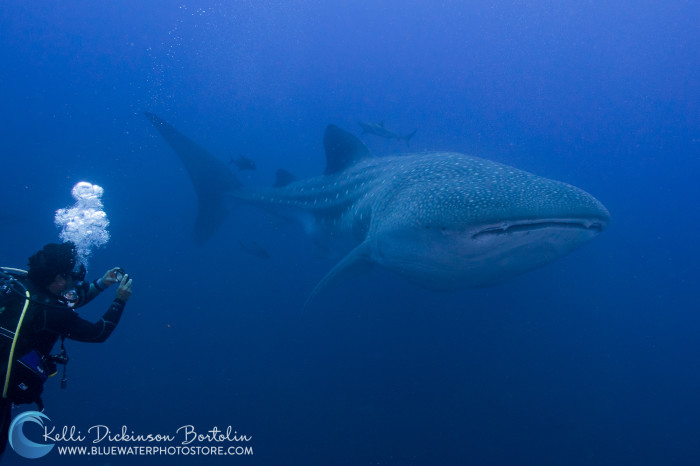
Huge, pregnant female whale sharks come to Darwin in June
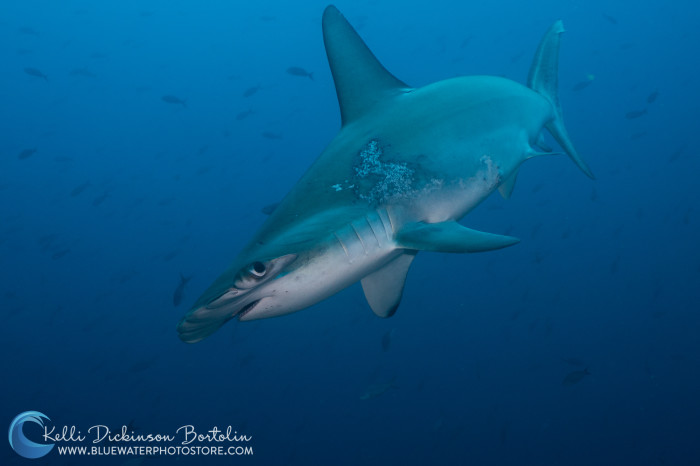
Hammerheads cruise by the rocky reef.
After the rough seas of Darwin, the calmer water around Wolf was a blessing. There was still plenty of surge, and chance of current, so I continued to back roll with the camera, confident in the housing’s construction. We found sanctuary at the site Shark Bay, where hundreds of hammerheads swam in front of our waiting cameras. Like watching a movie, they just kept swimming back and forth in the depths that stretched before us. In addition we did one dive with the macro lens, looking for the odd little Red Lipped Batfish. Having pre-programed my Sony to split out the autofocus, the Aquatica housing made it easy to focus using the Custom 1 button. This allowed me to keep focus locked and shoot several shots quickly and accurately.
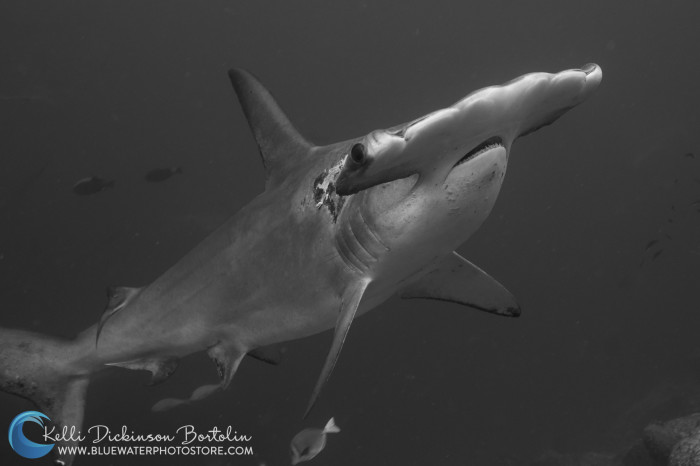
If you stay still and find the right spot, the hammerheads will even swim right over you!
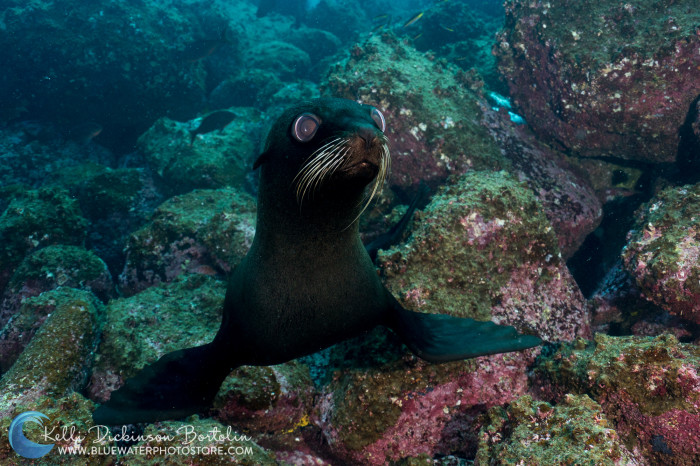
Curious Fur Seals frolic in the shallows of Shark Bay.
The rest of the trip continued smoothly as we explored the calmer, yet colder waters off the main group of Islands. I had the housing set up with Electronic Sync Cables, which worked fine, however I would highly recommend opting for the internal flash trigger and fiber optic cables with this housing. It means one less o-ring to manage, and makes for much easier changes if you want to remove the strobes and add video lights, or take just the housing down for ambient light shots while snorkeling.
The frigid waters off Isabela brought us up close and personal with large mola mola, and offered us beautiful sea fans akin to the temperate waters of Southern California. We spent an afternoon frolicking with hungry marine iguanas as they dived in the shallows to munch on green and red algae. Evenings on this trip were spent marveling over the sights from earlier in the day, sharing images with each other and giving photo workshops to help improve for the next day. Each night we collapsed into bed exhausted from adventure and dreamt of the next day’s excitement. The trip included two land tours, the birds and iguanas at the start, and an afternoon with giant tortoises on Santa Cruz Island to cap it off. As long as ten days on a boat may seem, suddenly it was over. Time to bid farewell to this magical land full of incredible creatures.
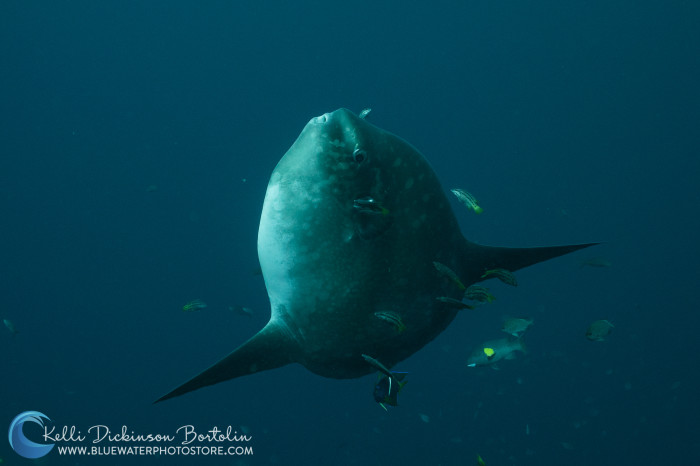
Mola Mola (or Mola Ramses) comes up from the deep to get cleaned by these little wrasse.
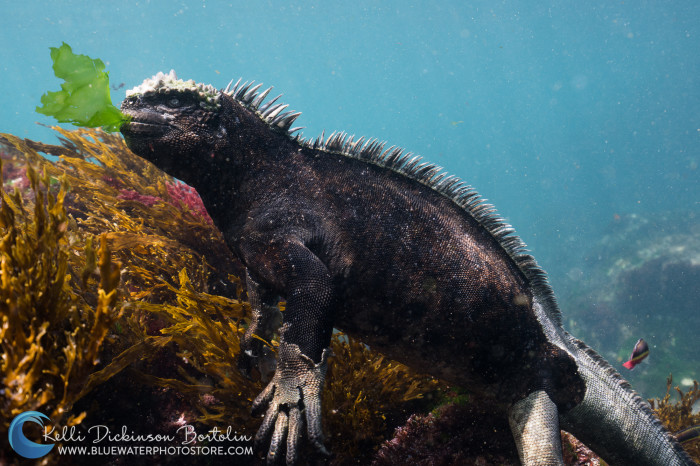
Marine Iguanas dive deep and hold their breath while chowing down on the algae growing on the rocks.
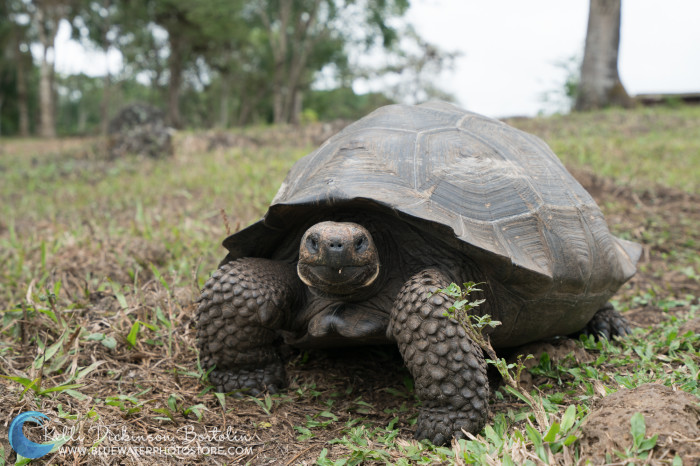
Found no where else, the Giant Tortoises are a must see when visiting the Galapagos.
The Galapagos is definitely a must dive location, but it pays to be prepared. Get the right gear, know how to use it and be prepared for some adventurous diving!
Check out these links for useful information on the Sony A7R II and the Aquatica Housing:
- Aquatica Housing for Sony A7R II Camera
- Sony A7R II Review
- Aquatica A7R II Review
- Best Underwater Settings for Sony A7R II





Related Articles
Popular Articles